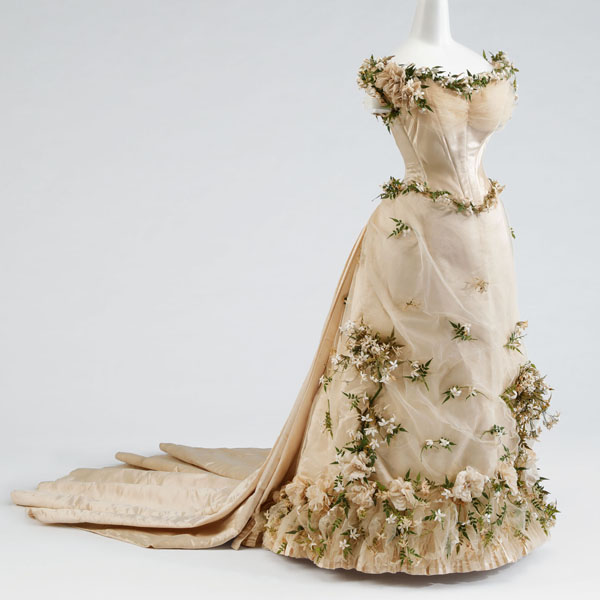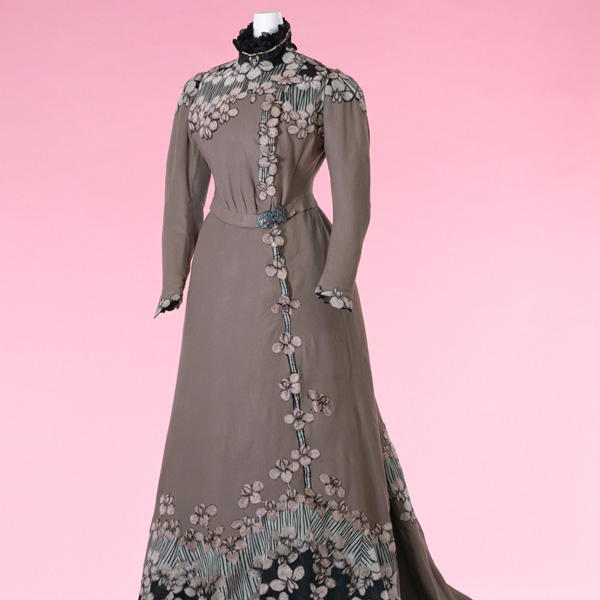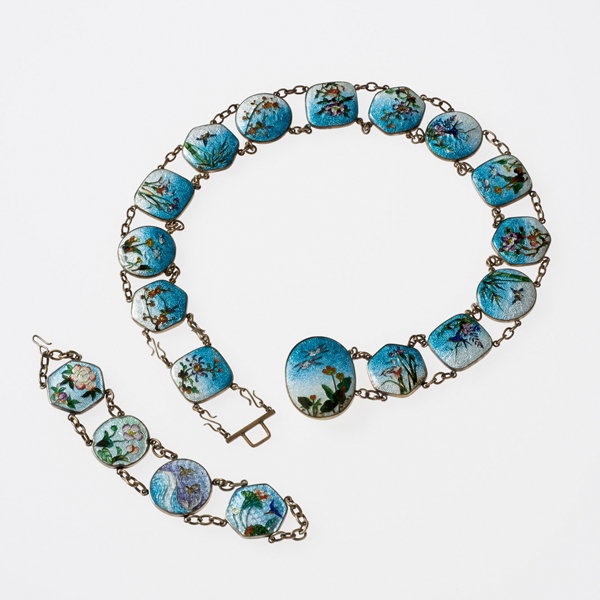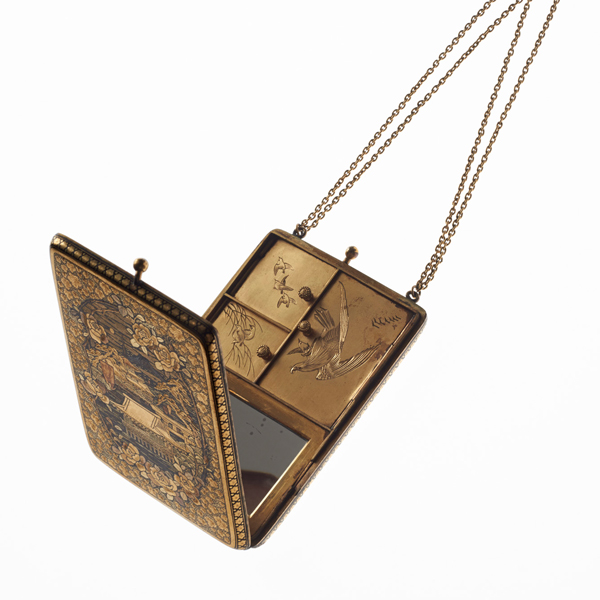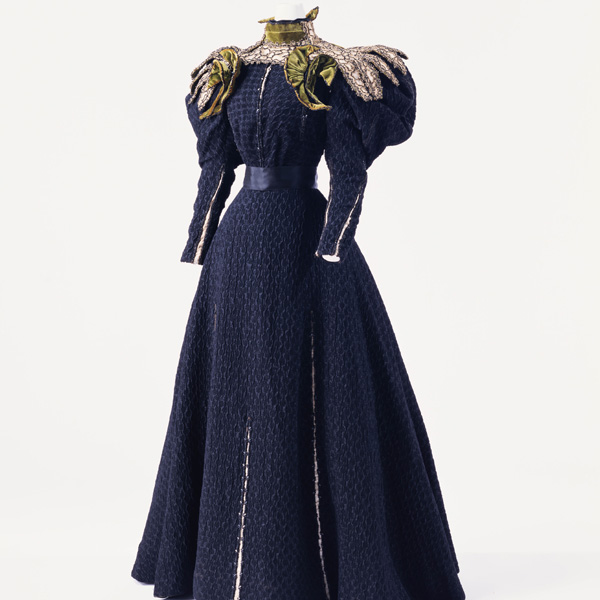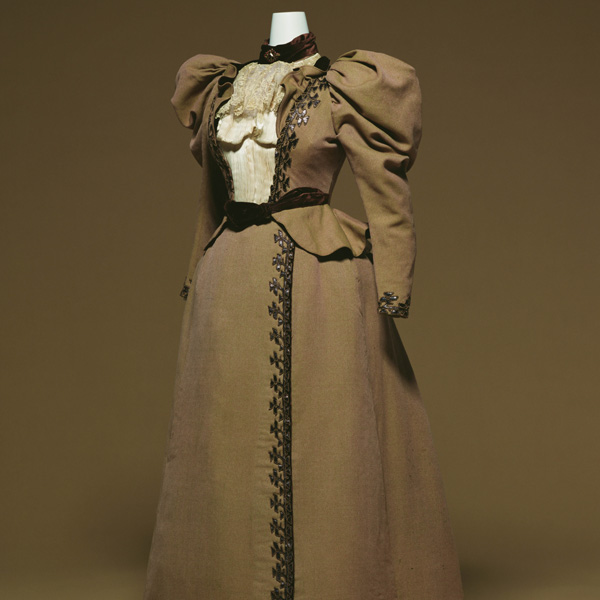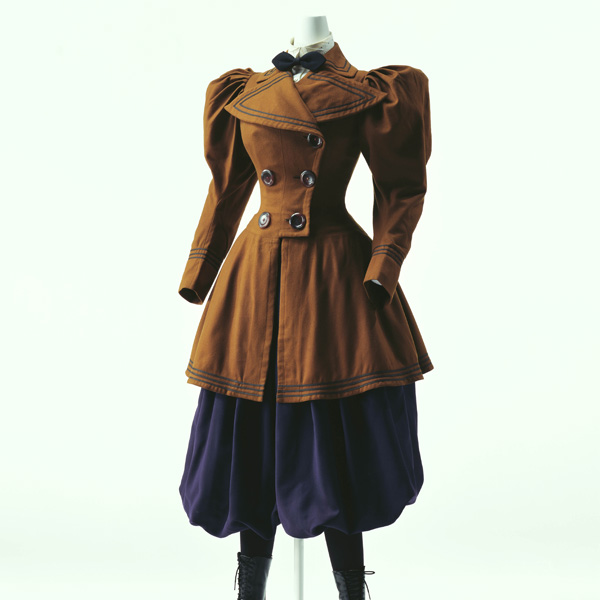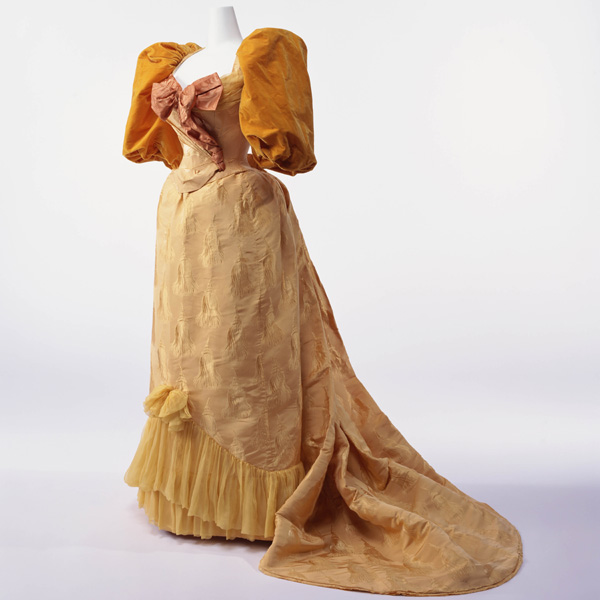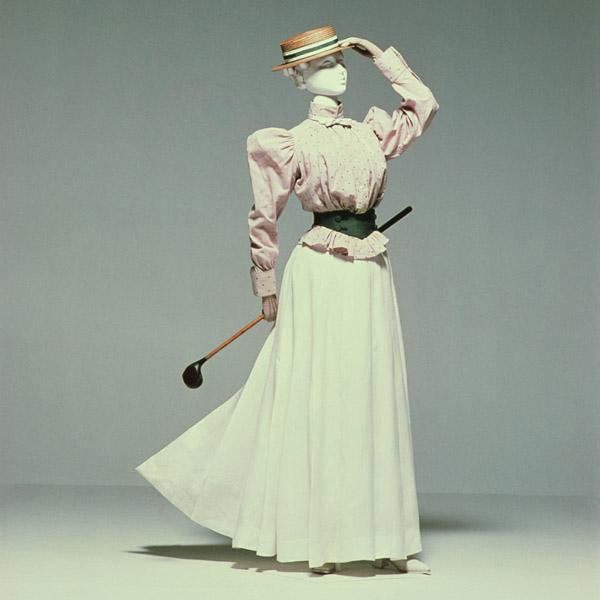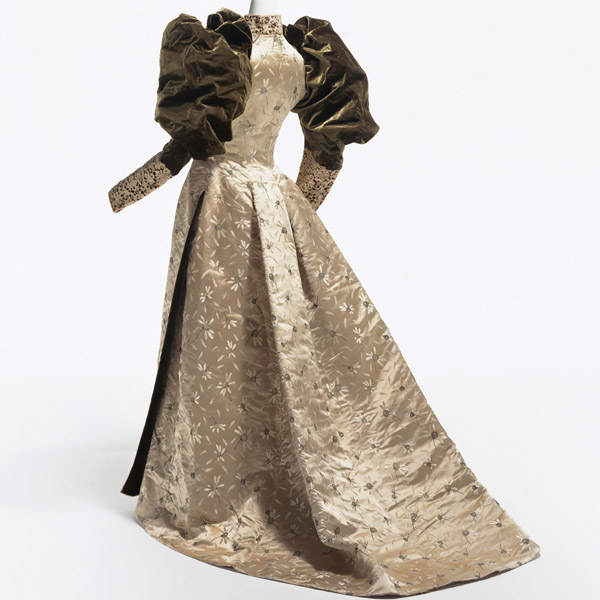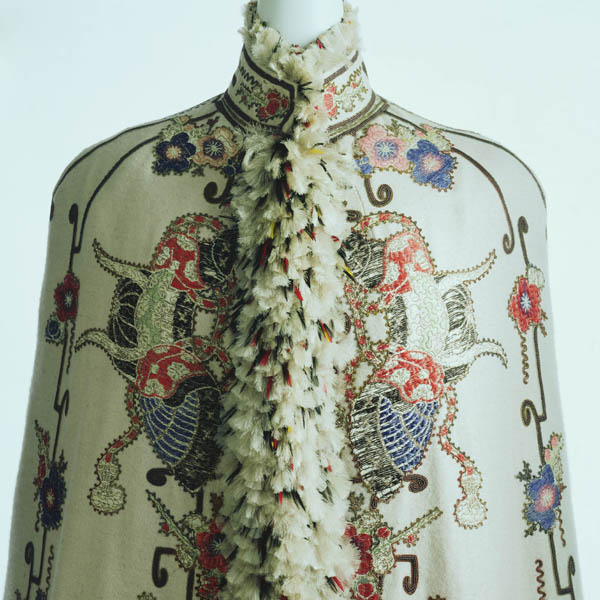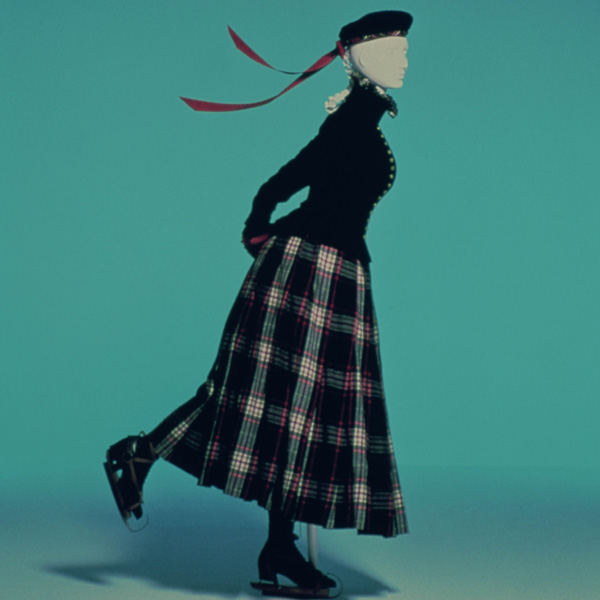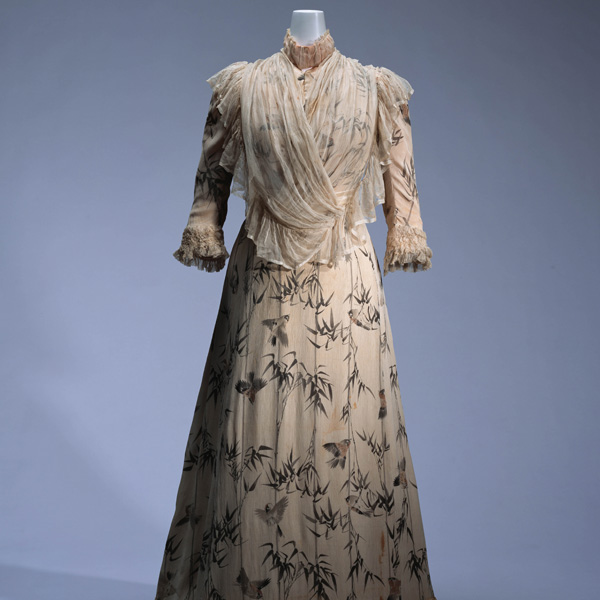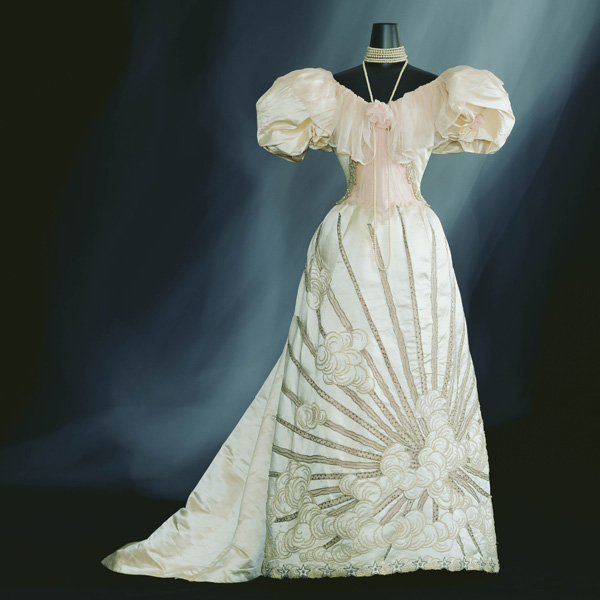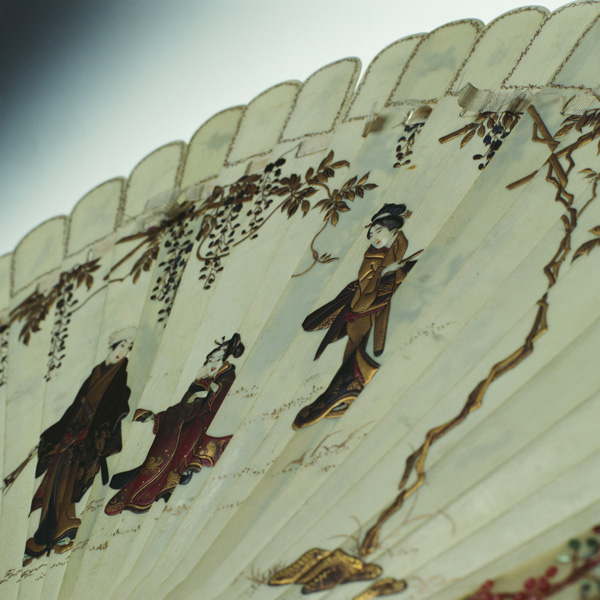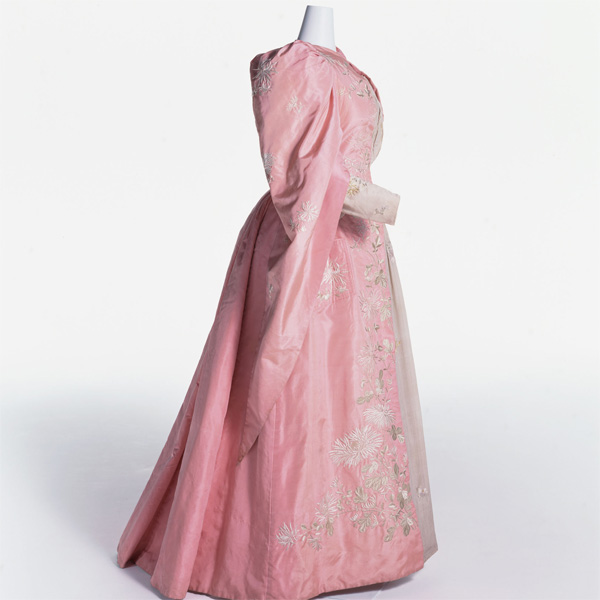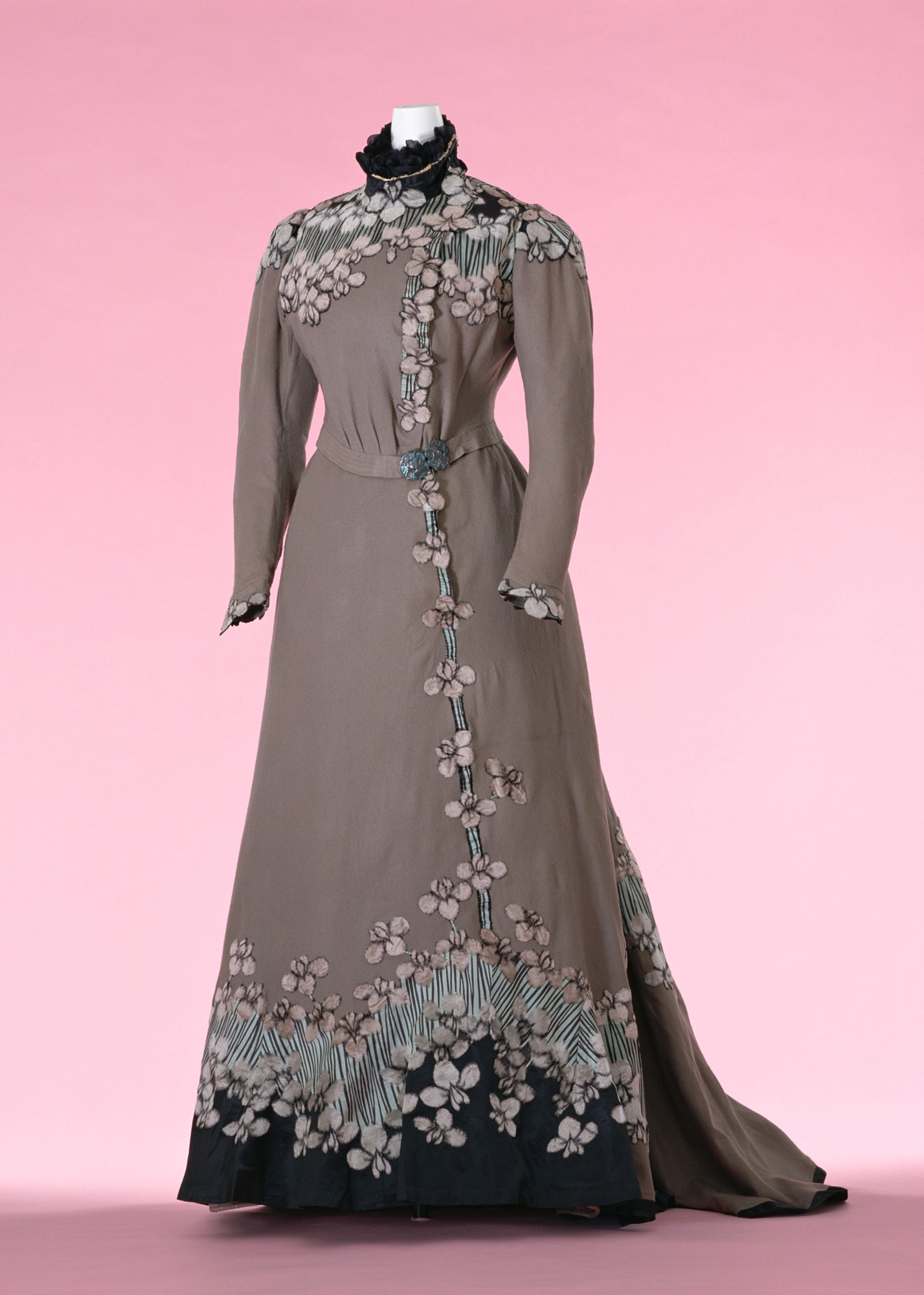
© The Kyoto Costume Institute, photo by Taishi Hirokawa
You can enlarge by putting the mouse cursor on the image.
Day dress
c. 1897
- Designer
- Jacques Doucet
- Brand
- Doucet
- Label
- Doucet
- Material
- Two-piece dress with belt; wool twill, silk satin, and silk chiffon with appliqué and enamel. Design featuring Japanese iris (kakitsubata) motifs on the shoulders, sleeves, and hem.
- Inventory Number(s)
- AC10426 2001-1-2ACB
Although irises had figured in the imagery of European heraldry, they became identified with Japanese art at the end of the nineteenth century after the introduction of the artistic style of the painter and designer Ogata Kōrin [1658-1716] in magazines such as “Le Japon artistique” (Artistic Japan) and were frequently incorporated into Western paintings, crafts, and textiles. The motif of densely packed irises—bringing to mind a field of Iris laevigata (kakitsubata)—often appeared on kimono, as evidenced by ukiyo-e prints and design books and was a main theme in paintings such as Irises at “Yatsuhashi” (after 1709) by Kōrin. The asymmetrical arrangement of irises on this day dress underlines the influence of Japanese designs.
Doucet opened around 1817 as a shop selling lace and lingerie and expanded into high fashion around 1870. Jacques Doucet, a designer who established the firm’s reputation in haute couture, was an astute art collector who purchased numerous East Asian artworks, including many from Japan. He was totally taken with the trend of Japonism and, as can be seen in this innovative work, incorporated it into his own designs.
(Translated by the Asian Art Museum, San Francisco for “Kimono Refashioned: Japan's Impact on International Fashion”, 2018)
 Digital Archives
Digital Archives